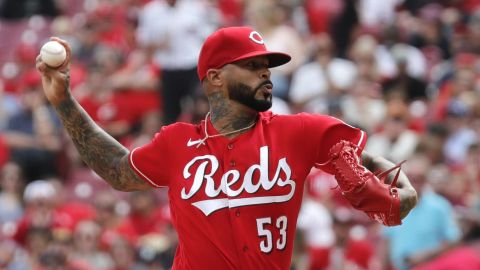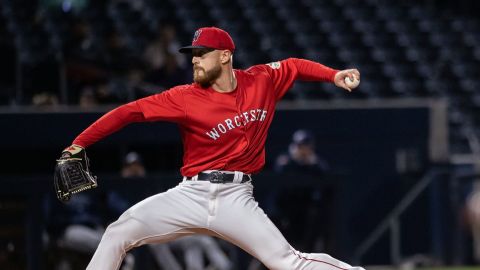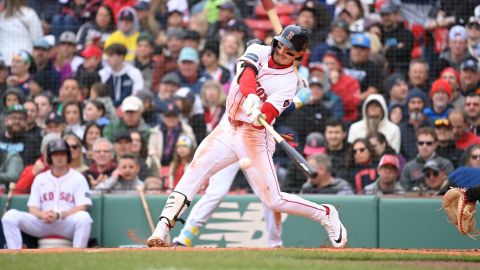 BOSTON — The writing was on the wall for Grady Sizemore.
BOSTON — The writing was on the wall for Grady Sizemore.
The Red Sox designated Sizemore for assignment Tuesday, ending the 31-year-old outfielder’s valiant comeback effort with Boston. The move was inevitable given the totality of the Red Sox’s situation.
When the Sox signed Sizemore over the offseason, their intent was for him to compete with Jackie Bradley Jr. for the starting center field job. Sizemore did that, ultimately winning the job out of spring training, but it wasn’t long before things caught up to him and reality set in.
“I think the grind of the major league season and playing every day (proved difficult),” Red Sox GM Ben Cherington said Tuesday at Fenway Park. “It’s hard to predict what’s going to happen to the body, and since he hadn’t been through it, he may just need to go through it a little bit more and find himself. Unfortunately, we just weren’t in a position to give him more time. I hope he gets it somewhere else.”
Sizemore hadn’t played since 2011 before latching on with Boston. The Red Sox taking a flier on the injury-plagued outfielder was just that. After all, why not see if a three-time All-Star who once was considered an elite five-tool player had something left to give?
The logic was sound. Sizemore’s performance was not. He hit just .216 with two homers, 15 RBIs and a .288 on-base percentage in 52 games. That includes a .154 (8-for-52) average and a .228 OBP against left-handers.
“There were glimpses that it was starting to come. We were down in Atlanta and felt like some of the explosiveness to the body was getting there, the bat speed showed pretty well,” Red Sox manager John Farrell said Tuesday. “And then there were other times when he was susceptible to decent fastballs followed by some decent changeups, and (he was) a little bit caught in the mix, whether that’s because two years of no playing to then not getting regular at-bats.”
Sizemore’s offensive struggles were a hindrance, albeit unsurprising. The veteran’s true value was lost, however, when it became clear that Sizemore was a less-than-ideal center field option. Sizemore already represented an imperfect fit to some extent because of his left-handed bat, but he became less valuable once the Red Sox realized he’s probably more suited for a corner outfield spot at this stage of his career.
The saving grace for Sizemore — as far as a roster spot goes — was Shane Victorino’s injury and Daniel Nava struggling to the point of a demotion. Now Victorino is set to return, Nava looks like his old self and Brock Holt is capable of playing all three outfield spots. There simply was no room for Sizemore, especially when you factor in that he’d earn $250,000 for every 25 plate appearances between 225 and 500 — he’s currently at 205.
“It wouldn’t surprise me if he’s in the big leagues somewhere else again this year. It wouldn’t surprise me if he looks like a better player this year,” Cherington said. “He had 200 at-bats or something. That’s a good sample, but for a guy who’s missed as much time, he may just need more, and we just weren’t in a position to give that to him.”
Perhaps Sizemore will find a new home, garner consistent playing time and morph back into a valuable major leaguer. It became apparent that scenario no longer was realistic in Boston, though, and the Red Sox thus made the sensible move to cut ties while on the hook for just $1.25 million rather than as much as $5 million.




